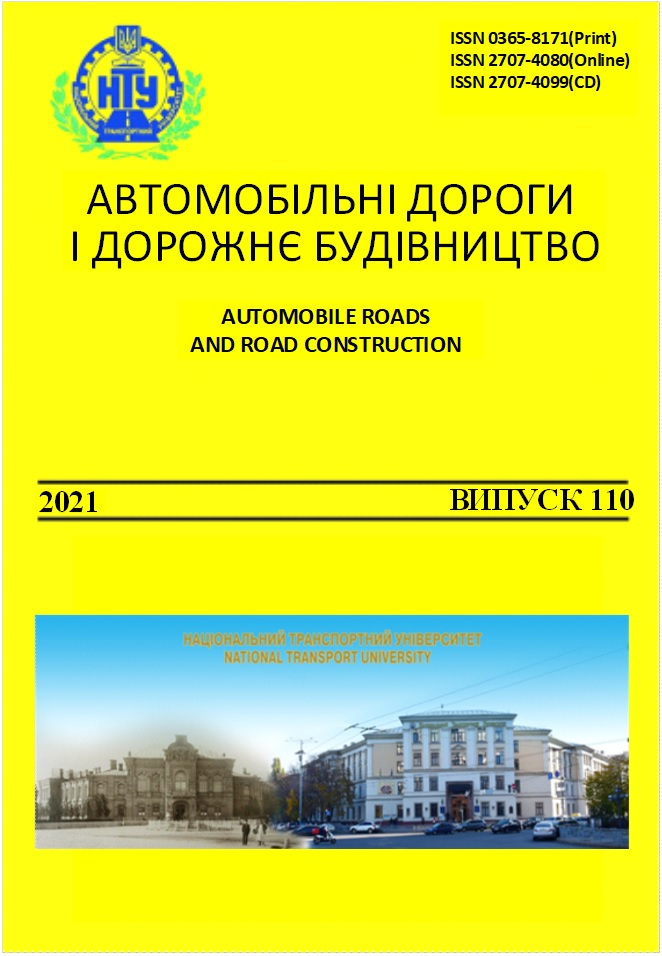Forest areas remote monitoring within the limits of transport objects impact
Dmytro Liashenko, National Transport University, Professor of Road Design, Geodesy and Land Management Department, https://orcid.org/0000-0001-5588-0322
Dmytro Pavliuk, National Transportation University, Professor of Road Design, Geodesy and Land Management Department, https://orcid.org/0000-0003-4493-4238
Vadym Belenok, National Aviation University, associate professor of Aerospace Geodesy and Land Management Department, https://orcid.org/0000-0001-5357-7493
Vitalii Babii, Taras Shevchenko National University of Kyiv, Institute of Geology, Assistant of Geoinformatics Department, https://orcid.org/0000-0003-3462-5407
Abstract: The article studies the issues of using remote sensing data for the tasks of ensuring sustainable nature management in the territories within the influence of transport infrastructure objects. Peculiarities of remote monitoring for tasks of transport networks design and in the process of their operation are determined. The paper analyzes the development of modern remote sensing methods (satellite imagery, the use of mobile sensors installed on cars or aircraft). A brief overview of spatial data collecting methods for the tasks of managing the development of territories within the influence of transport infrastructure (roads, railways, etc.) has made. The article considers the experience of using remote sensing technologies to monitor changes in the parameters of forest cover in the Transcarpathian region (Ukraine) in areas near to highways, by use Landsat imagery.
Article language: Ukrainian
Referenses:
- Belenok V. Yu. [et.al.]. (2017). Vykorystannia aerokosmichnykh metodiv ta metodiv obrobky danykh dystantsiinoho zonduvannia Zemli dlia ekolohichnoho monitorynhu Kakhovskoho vodoskhovyshcha. Visnyk Astronomichnoi shkoly. 13. 1. 54-63.
- Vplyv transportnoi infrastruktury na bioriznomanittia: praktychnyi posibnyk dlia krain Karpatskoho rehionu. (2019) Hlavach V., Andel P., Matushova Yi., ta in. Drohobych. Kolo. 228 s.
- HBN V.2.3-218-007:2012 (2012) Ekolohichni vymohy do avtomobilnykh dorih. Proektuvannia. Kyiv, (Informatsiia ta dokumentatsiia). http://kbu.org.ua/assets/app/documents/dbn2/122.1..pdf (data zvernennia: 19.01.2021).
- Hrechko T. K., Lisovskyi S. A., Romaniuk S. A., Rudenko L. H. (2015) Publichne upravlinnia v zabezpechenni staloho (zbalansovanoho) rozvytku. Kherson. 264.
- Slobodianyk, M. P. (2014) Vykorystannia metodiv DZZ ta HIS-tekhnolohii dlia monitorynhu lisovykh resursiv. Visnyk heodezii ta kartohrafii. 1. 27–31.
- Kokhan S. S., Vostokov A. B. (2009) Dystantsiine zonduvannia Zemli: teoretychni osnovy / [Pidruchnyk] Peredm. D. O. Melnychuka. Vyshcha shkola. 511.
- Liashenko, D. [et.al.]. (2020). Landslide GIS modelling with QGIS software. XIV International Scientific Conference “Monitoring of Geological Processes and Ecological Condition of the Environment”, 1‑5.
- Steenberg, J.W.N. [et.al.]. (2016). A conceptual framework of urban forest ecosystem vulnerability. Environmental Reviews. Vol. 25, 115-126.
Open Access: http://publications.ntu.edu.ua/avtodorogi_i_stroitelstvo/109/109.pdf
Online publication date: 25.02.2021
Print date: 01.02.2021
